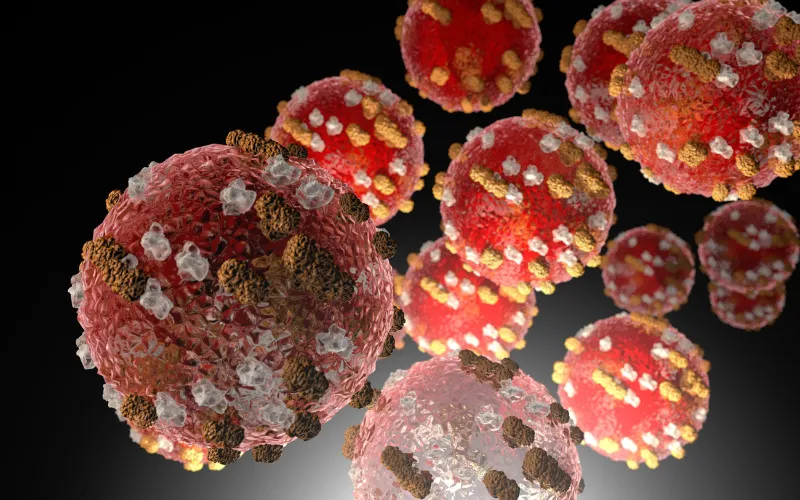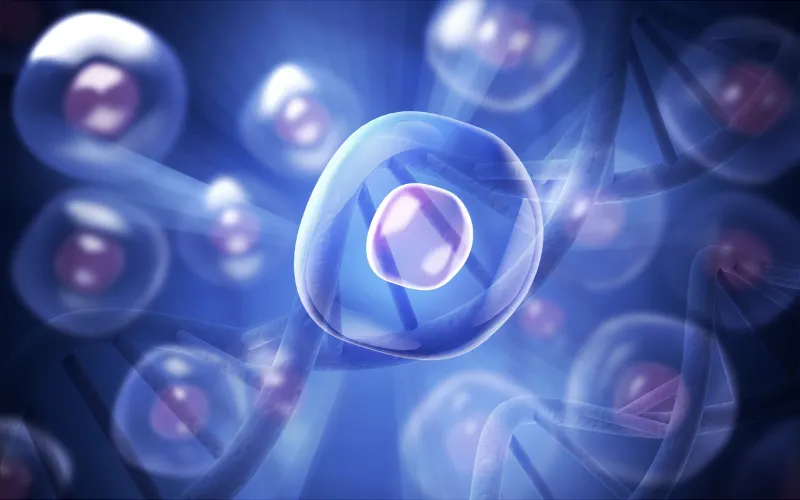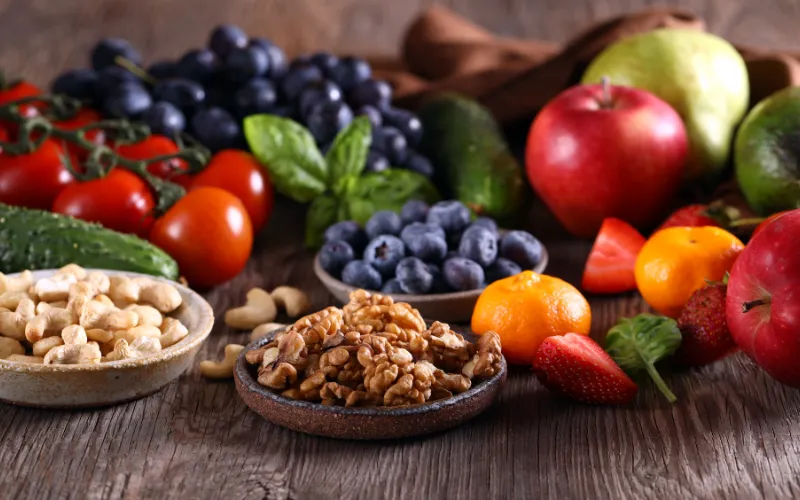
Have you ever wondered how cells defend themselves against the relentless assault of stress, pollution, and harmful compounds? Every day, oxidative stress generates free radicals—unstable molecules capable of damaging DNA, lipids, and proteins. Left unchecked, this cellular damage accelerates aging, drives inflammation, and contributes to the development of chronic disease pathways.
This is where antioxidants cellular protection becomes essential. Antioxidants act as molecular shields, neutralizing free radicals before they compromise cellular integrity. For practitioners, the real question is not if antioxidants matter, but how to strategically leverage them in clinical practice.
The key lies in personalized nutrition for nutrigenomics. Genetic variability means not all patients respond equally to the same antioxidant interventions. Some gene variants heighten sensitivity to oxidative stress, while others modify the efficiency of antioxidant metabolism. By integrating nutrigenomics insights with dietary strategies, practitioners can design precision protocols that optimize cellular resilience for each individual’s genetic blueprint.
Key Takeaways
Antioxidants are crucial for protecting cells from oxidative stress induced by free radicals, which can contribute to chronic conditions such as diabetes and cardiovascular disease.
The body produces enzymatic antioxidants (e.g., superoxide dismutase, catalase) and relies on dietary antioxidants (e.g., vitamins C, E, and beta carotene) for a comprehensive defense system.
Nutrition plays a crucial role in enhancing cellular protection, with antioxidant-rich foods such as berries, leafy greens, and green tea supporting the body’s natural defense mechanisms.
Nutrigenomics highlights how personalized nutrition, tailored to individual genetic variations, can effectively optimize antioxidant response and reduce oxidative damage.
Dietary patterns, such as the Mediterranean diet, synergize nutrients to reduce oxidative stress, but whole foods are preferred over high-dose supplements for maintaining balance.
Healthcare practitioners can utilize oxidative stress biomarkers and genetic testing to develop personalized, nutrigenomic-based interventions that lead to improved patient outcomes.
Why Antioxidants Matter for Cellular Health
Think of your cells as tiny superheroes that need protection to work correctly. Antioxidants act as shields, defending cells from damage caused by free radicals, unstable molecules created by pollution, stress, poor diet, and metabolism. These molecules can harm DNA, proteins, and fats in your body, potentially leading to chronic diseases like diabetes, obesity, and heart problems.
Antioxidants neutralize free radicals to prevent this damage. Enzymatic antioxidants, such as superoxide dismutase (SOD) and catalase, along with non-enzymatic compounds like vitamin C, vitamin E, and glutathione, help protect and repair cells. Without them, oxidative stress can overwhelm cells, causing damage and inflammation.
What you eat plays a key role. Antioxidants found in foods like blueberries, spinach, and green tea work in conjunction with your body’s natural defenses. Nutrients like vitamins B2, B6, B12, beta carotene, and selenium support DNA repair and enhance your resistance to oxidative stress. It’s a team effort, and your diet plays a crucial role in maintaining cellular health. This connection between diet and gene health, particularly through antioxidants, is at the core of nutrigenomics, offering insights into how personalized nutrition can optimize cellular protection.
If you’re a healthcare practitioner, understanding this interplay is gold. With over 10 million single-nucleotide polymorphisms (SNPs) affecting nutrient metabolism, every patient is unique. By leveraging nutrigenomics, you’re not just recommending fruits and veggies; you’re creating nutrition plans that target specific genetic vulnerabilities. For instance, someone with a variation in their FTO gene (linked to obesity) may benefit from diets that emphasize lower-glycemic-index foods.
The Science of Cellular Protection
Your cells are constantly working to keep you healthy. However, threats like oxidative stress and free radicals can harm them. Antioxidants step in as protective bodyguards to defend your cellular health.
Oxidative Stress and Cellular Damage
Oxidative stress is like a constant storm in your cells caused by molecules called reactive oxygen species (ROS). These molecules are produced during everyday activities, such as energy production, exposure to pollutants, and inflammation. While small amounts of ROS help fight infections, too much can damage your DNA, disrupt repair processes, and harm cells. This damage can lead to mitochondrial issues, premature cell aging, and eventually, chronic illnesses like diabetes, heart disease, or neurodegenerative disorders. Oxidative stress acts as the trigger for this chain reaction.
Antioxidant Defense Systems
Antioxidants act like superheroes, protecting your cells from damage caused by harmful molecules called ROS. Your body has its own enzymatic antioxidants, including superoxide dismutase, catalase, and glutathione peroxidase. These neutralize oxidative stress, similar to a cleanup crew. Additionally, dietary antioxidants, including vitamins C and E, carotenoids, and flavonoids, provide extra support. Vitamin C is found in water-based areas, such as blood, while Vitamin E protects fatty tissues. Together, they ensure your cells stay protected everywhere.

Nutrigenomics and Antioxidant Pathways
Your body’s antioxidant defense system is like a high-tech security team, constantly scanning for threats and neutralizing harmful free radicals. But did you know your genetic makeup can determine how efficient that team is? That’s where nutrigenomics steps in, connecting the dots between your genes, nutrition, and antioxidant pathways to create a personalized strategy for cellular protection.
Gene Variants Influencing Antioxidant Capacity
Genetic variation plays a critical role in determining the efficiency of endogenous antioxidant defenses. Several genes, including SOD2, GPX1, CAT, and NRF2, encode enzymes that are central to neutralizing reactive oxygen species (ROS) and maintaining redox balance. These enzymes function as the primary defense line, mitigating cellular damage by catalyzing the breakdown of superoxide radicals, hydrogen peroxide, and other oxidative intermediates.
However, single-nucleotide polymorphisms (SNPs) in these genes can significantly influence antioxidant capacity. For instance, variants in the SOD2 gene may impair the conversion of superoxide radicals into less reactive species, increasing susceptibility to oxidative stress. Similarly, polymorphisms in GPX1 can reduce the enzyme’s ability to detoxify hydrogen peroxide, thereby elevating oxidative burden at the cellular level.
From a clinical standpoint, these genetic variations can contribute to differential risk for conditions where oxidative stress is a key driver, such as diabetes, cardiovascular disease, and neurodegenerative disorders. Integrating nutrigenomic insights into practice allows for targeted dietary interventions. For example, ensuring adequate intake of cofactors such as manganese (for SOD2 activity) and selenium (for GPX1 function) can support enzymatic efficiency and reinforce antioxidant defenses in individuals with identified genetic vulnerabilities.
Nutrigenomic Modulation of Antioxidant Response
Beyond their nutritive value, specific bioactive compounds exert profound regulatory effects on gene expression. One of the most clinically relevant pathways is mediated by NRF2 (nuclear factor erythroid 2 2-related factor 2), often referred to as the “master regulator” of antioxidant defenses. When activated, NRF2 binds to antioxidant response elements (AREs) in the DNA, initiating the transcription of a wide array of cytoprotective enzymes involved in detoxification, maintaining redox balance, and facilitating cellular repair.
Several dietary compounds are well-documented activators of NRF2 signaling:
Sulforaphane (from broccoli, kale, and other cruciferous vegetables) is among the most potent natural NRF2 inducers, enhancing both antioxidant and phase II detoxification pathways.
Curcumin (from turmeric) augments NRF2 activity while also modulating inflammatory signaling, thereby improving overall cellular resilience.
Resveratrol (from red grapes and berries) provides dual benefits, promoting NRF2 activation while exerting anti-inflammatory effects through SIRT1 and related pathways.
Clinical and translational studies have demonstrated that targeted nutrition can modulate oxidative stress biomarkers in individuals with reduced antioxidant capacity. For example, dietary interventions rich in sulforaphane and curcumin have been shown to improve redox status and reduce markers of oxidative damage in patients with genetic variants that affect NRF2 regulation.
For practitioners, this highlights the importance of integrating nutrigenomic profiling with dietary strategies. By tailoring nutritional interventions to an individual’s genetic predisposition, clinicians can enhance cellular defenses, reduce oxidative load, and support long-term metabolic and cardiovascular health.

Diet, Antioxidants, and Cellular Health
Dietary intake is one of the most significant modulators of cellular redox balance. Whole-food sources of antioxidants provide a complex array of vitamins, minerals, and phytochemicals that act synergistically to mitigate oxidative stress and support genomic stability. Unlike isolated supplementation, which may disrupt physiological redox signaling, food-based antioxidants integrate more effectively into the body’s natural defense systems.
Dietary Sources of Antioxidants
Berries (blueberries, strawberries, blackberries): Rich in anthocyanins and other polyphenols, berries provide vigorous free radical scavenging activity and may support DNA repair mechanisms.
Leafy greens (spinach, kale): High in vitamins C and E, critical cofactors in enzymatic antioxidant systems, and essential for protecting lipids and proteins from oxidative damage.
Cruciferous vegetables (broccoli, Brussels sprouts, kale): Key sources of sulforaphane, which activate NRF2-dependent antioxidant and detoxification pathways.
Nuts and seeds (almonds, walnuts, sunflower seeds): Provide selenium and vitamin E, both integral to glutathione peroxidase activity and lipid membrane protection.
Green and black teas: Contain catechins such as EGCG, which exert antioxidant and anti-inflammatory effects, with evidence supporting roles in cardiovascular and cognitive health.
From a clinical nutrition perspective, encouraging patients to adopt dietary patterns rich in these foods ensures a diverse and continuous supply of antioxidant compounds. These patterns not only enhance cellular protection but also contribute to broader metabolic resilience and a reduced risk of chronic disease.
Dietary Patterns and Cellular Health
Antioxidant activity within the body is not solely determined by individual nutrients, but by the overall dietary pattern. Synergistic interactions among polyphenols, vitamins, minerals, and other phytochemicals create a more robust cellular defense network than isolated compounds can achieve.
Mediterranean diet: Extensively studied in clinical and epidemiological research, this pattern emphasizes extra-virgin olive oil, nuts, fatty fish, legumes, and a wide variety of fruits and vegetables. The result is a diet rich in diverse antioxidants and anti-inflammatory compounds that work in concert to lower oxidative stress, improve endothelial function, and reduce the long-term risk of cardiovascular and metabolic diseases.
Plant-based dietary patterns: Diets centered around legumes, whole grains, seeds, and vegetables provide a broad spectrum of polyphenols and micronutrients. This diversity contributes to a comprehensive redox “safety net,” supporting multiple pathways of antioxidant defense and cellular resilience.
It is important to note that excessive reliance on high-dose antioxidant supplementation can be counterproductive, potentially disrupting physiological redox signaling and impairing adaptive stress responses. Clinical evidence suggests that antioxidants delivered through whole foods offer more effective and safer modulation of oxidative balance due to the presence of naturally co-occurring compounds.
The key clinical takeaway is that dietary diversity and pattern-based interventions are more effective than isolated supplementation strategies. Promoting balanced, colorful, and whole-food–based nutrition supports sustained antioxidant cellular protection and enhances long-term cellular resilience.
Integrative Approaches for Practitioners
For clinicians, translating molecular insights into targeted care strategies is central to advancing antioxidants cellular protection. Nutrigenomics provides a framework for integrating nutrition and cellular health into personalized interventions, allowing practitioners to strengthen redox balance, mitigate oxidative damage, and reduce disease risk with greater precision.
1. Assessing Antioxidant Status
Objective assessment of antioxidant status is the foundation for clinical decision-making. Laboratory evaluations such as oxidative stress panels (measuring lipid peroxidation, protein oxidation, and DNA damage markers) provide a snapshot of cellular resilience. Biomarkers such as glutathione levels, redox ratios (GSH/GSSG), and validated DNA damage assays are particularly informative in gauging oxidative burden.
Genetic testing adds another dimension by identifying SNPs in antioxidant-related genes (e.g., SOD2, GPX1, GSTM1, CAT, NRF2). For example, a GSTM1 deletion polymorphism indicates compromised detoxification capacity, while an SOD2 variant may reduce mitochondrial antioxidant efficiency. Such findings highlight functional vulnerabilities in the patient’s defense system and inform targeted nutritional strategies.
2. Designing Nutrigenomic Interventions
Once genetic predispositions and biochemical markers are identified, practitioners can implement personalized nutrition interventions tailored to each patient’s antioxidant profile. This approach addresses not just “dietary intake,” but the measurable diet–antioxidant effects on oxidative stress and cellular protection.
Patients with SOD2 polymorphisms may benefit from manganese-rich foods (nuts, legumes, leafy greens) to optimize mitochondrial superoxide dismutase activity.
Individuals with GSTM1 null genotypes may require greater intake of cruciferous vegetables, which provide sulforaphane and related compounds that upregulate detoxification and NRF2-dependent antioxidant pathways.
Broad-spectrum antioxidant support can be achieved through polyphenol-rich foods such as blueberries, green tea, and spinach, reinforcing systemic cellular resilience.
3. Case-Based Integration
Consider a patient presenting with elevated oxidative stress markers, suboptimal dietary patterns, and genetic variants affecting antioxidant pathways. By leveraging nutrigenomic data, the clinician can implement a precision protocol:
Emphasize cruciferous vegetable intake for GSTM1-null carriers.
Recommend polyphenol-rich foods to reduce systemic oxidative burden.
Monitor oxidative biomarkers over time to evaluate response.
This model demonstrates how personalized nutrition for nutrigenomics moves beyond general dietary advice, providing clinically actionable pathways to improve nutrition cellular health and enhance long-term patient outcomes.
Conclusion
Antioxidants and cellular protection are more than just concepts, they are actionable clinical strategies that can reshape patient outcomes. By integrating nutrigenomics and personalized nutrition, practitioners can identify genetic vulnerabilities and optimize antioxidant pathways with precision. Whole-food–based interventions, informed by genetic testing and biomarker analysis, provide a powerful framework for reducing oxidative stress and promoting long-term resilience.
For practitioners looking to deepen their expertise, consider the Integrative Genomics Specialist Program by Elite Gene Labs. It’s an advanced training in applying genomic insights to clinical practice. This program equips you with the tools to translate genetics and science into individualized protocols, ensuring that your patients receive care according to their unique genetic blueprint. By combining the science of antioxidants with integrative genomics, you position yourself at the forefront of precision health.
Frequently Asked Questions
How do free radicals impact cellular health, and what role do antioxidants play?
Free radicals are unstable molecules that can damage DNA, proteins, and cell membranes when they exceed what the body’s defenses can manage. Antioxidants neutralize these radicals by donating electrons, preventing cellular damage. This balance maintains healthy cellular function and reduces risk for long-term conditions like heart disease and neurodevelopmental issues.
Which foods are best for enhancing nutrition cellular health through antioxidants?
Whole foods rich in antioxidants such as berries, leafy greens, nuts, seeds, and legumes provide an array of vitamins (C, E), minerals (selenium, zinc), and phytochemicals (polyphenols, carotenoids) that support nutrition cellular health. Emphasizing dietary diversity ensures broad protection for cellular systems.
Are antioxidant supplements as effective as those from whole foods?
Antioxidants from whole foods are generally more beneficial than supplements. Supplements in high doses may disrupt natural cell signaling and, in some cases, increase health risks. Whole food sources deliver balanced combinations of nutrients that work synergistically to protect cells.
Can everyone benefit from specific antioxidant-rich diets like the Mediterranean or plant-based patterns?
Yes, dietary patterns such as the Mediterranean or diverse plant-based diets enhance antioxidant intake through a mix of fruits, vegetables, legumes, and healthy fats. These diets promote comprehensive cellular support and have been linked to lower risk of long-term diseases.
Could too many antioxidants ever be harmful?
Yes, an excess of antioxidants, especially from high-dose supplements, can impair immune function and physiological stress responses, a phenomenon known as antioxidative stress. Whole food sources are less likely to cause such imbalances.
What is nutrigenomics, and how does it relate to antioxidants cellular protection?
Nutrigenomics studies how genetics influence individual responses to nutrients. By understanding genetic variants affecting antioxidant pathways, practitioners can recommend foods that best support each person’s cellular protection.
What should I look for when choosing a probiotic supplement?
Choose supplements that clearly state strain names (e.g., L. rhamnosus GG), include clinically supported CFU counts, and have evidence-based claims. Delivery format (capsule vs. food) and storage also matter for effectiveness.
Is a high CFU count always better in probiotics?
Not necessarily. More CFUs don’t automatically mean better results. Effectiveness depends on the specific strain, what it targets, and how it’s delivered rather than just the count.
Can probiotics help when someone is taking antibiotics?
Yes, strains like Saccharomyces boulardii and Lactobacillus rhamnosus GG can reduce the risk of antibiotic-associated diarrhea by replenishing good bacteria. Time dosing a couple of hours apart from antibiotics when possible
References:
Birben, E., Sahiner, U. M., Sackesen, C., Erzurum, S., & Kalayci, O. (2012). Oxidative stress and antioxidant defense. World Allergy Organization Journal, 5(1), 9–19. https://doi.org/10.1097/WOX.0b013e3182439613
Traber, M. G., & Stevens, J. F. (2011). Vitamins C and E: Beneficial effects from a mechanistic perspective. Free Radical Biology and Medicine, 51(5), 1000–1013. https://doi.org/10.1016/j.freeradbiomed.2011.05.017
Borges, V. M., de Oliveira, R. A. G., de Farias Domingos, I., et al. (2018). Association of the SOD2 polymorphism (Val16Ala) with superoxide dismutase activity and clinical complications in sickle cell anemia. Journal of Tropical Pediatrics, 64(2), 140–147. https://doi.org/10.1093/tropej/fmx050
Jones, D. P. (2006). Redefining oxidative stress. Antioxidants & Redox Signaling, 8(9–10), 1865–1879. https://doi.org/10.1089/ars.2006.8.1865
Shannon, O. M., Mendes, I., Köchl, C., et al. (2020). Mediterranean diet increases endothelial function in adults: Systematic review and meta-analysis of randomized controlled trials. The Journal of Nutrition, 150(5), 1151–1159. https://doi.org/10.1093/jn/nxaa002
Cooke, M. S., Evans, M. D., Dizdaroglu, M., & Lunec, J. (2003). Oxidative DNA damage: Mechanisms, mutation, and disease. The FASEB Journal, 17(10), 1195–1214. https://doi.org/10.1096/fj.02-0752rev
Mahmoudi, M., et al. (2019). The effects of curcumin on oxidative stress markers: A systematic review and meta-analysis of randomized controlled trials. Complementary Therapies in Medicine, 43, 1–8. https://doi.org/10.1016/j.ctim.2019.01.016

